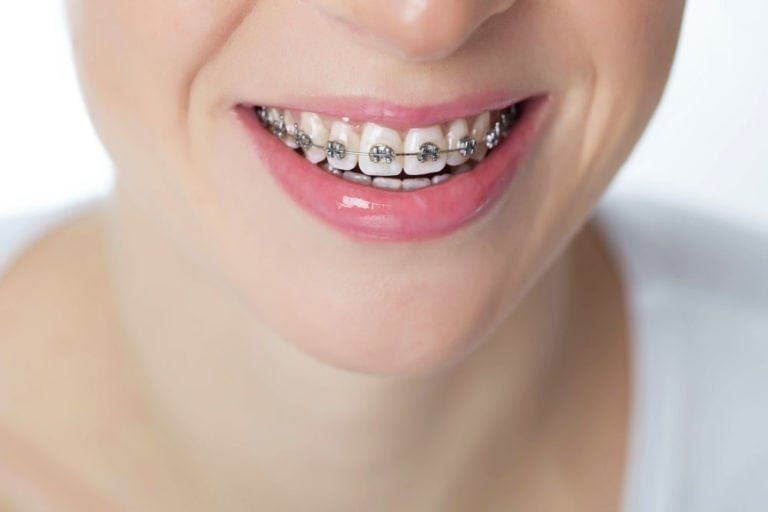How Dental Headgear Works: A Complete Guide for Patients
- dclinicdubai
- Aug 7
- 4 min read
Dental headgear is an orthodontic device used to correct jaw alignment and bite issues that cannot be resolved with braces alone. It applies external force to guide the growth of facial bones and reposition teeth gradually. For patients seeking effective orthodontic solutions, dental headgear in Dubai offers a specialized approach to treating complex dental concerns, especially among children and teens during developmental years.

Purpose of Dental Headgear:
Dental headgear is designed to address jaw discrepancies and severe malocclusions by applying continuous pressure in specific directions. It is particularly beneficial in growing patients where skeletal changes are still possible.
Helps correct overbites, underbites, and crossbites
Supports controlled jaw development
Aids in tooth positioning for proper alignment
May reduce or eliminate the need for surgery
Enhances overall facial symmetry
Orthodontists recommend headgear when traditional braces are not sufficient to achieve desired results.
Components of Dental Headgear:
The structure of dental headgear includes several key components that work together to deliver the necessary force to the teeth and jaw.
Facebow: A metal piece that fits into the molar bands inside the mouth
Headcap or Neckpad: Worn around the head or neck to anchor the device
Straps: Elastic or fabric bands connecting the headgear to the facebow
Hooks or Connectors: Secure attachments between internal and external parts
Each component plays a crucial role in maintaining the appropriate tension and direction of force.
How Force Is Applied:
Dental headgear works by applying steady pressure to the teeth and jaw over time, using the external structure of the appliance as leverage.
Pulls upper or lower jaw in the desired direction
Redirects bone growth in children and adolescents
Controls the movement of teeth in specific quadrants
Applies consistent pressure throughout wear time
Promotes gradual changes without invasive procedures
The amount and direction of force depend on the type of headgear and treatment goals.
Common Types of Dental Headgear:
Different types of headgear are used based on the patient's orthodontic diagnosis and age. Each type serves a specific corrective purpose.
Cervical Pull Headgear: Used to correct overbites by pulling upper molars backward
High Pull Headgear: Targets upper jaw growth and is used for patients with open bites
Reverse Pull (Facemask): Treats underbites by bringing the upper jaw forward
Combination Headgear: Blends cervical and high pull for complex cases
An orthodontist determines the appropriate type during the treatment planning phase.
When Headgear Is Recommended:
Orthodontists usually recommend dental headgear for growing children or adolescents with skeletal discrepancies. In rare cases, it may also be used in adults.
Moderate to severe overbite or underbite
Asymmetrical jaw development
Open bite or crossbite issues
Impacted teeth requiring guided movement
Preventive treatment to avoid surgical intervention
Timing is critical, and earlier treatment often leads to better outcomes.
Wearing Guidelines and Schedule:
To be effective, dental headgear must be worn consistently according to the orthodontist’s instructions. Compliance is a major factor in treatment success.
Typically worn 12 to 16 hours per day
Best worn in the evening and while sleeping
Avoided during physical activity or meals
Worn for several months up to 2 years
Regular follow-ups to track progress
Missing wear time can significantly delay or hinder treatment effectiveness.
Benefits of Using Dental Headgear:
Though it may seem cumbersome at first, dental headgear offers numerous advantages for eligible patients. These benefits go beyond cosmetic improvement.
Promotes healthy jaw alignment and growth
Enhances long-term oral functionality
Reduces future dental complications
Improves bite efficiency and speech
Can reduce the need for extractions or surgery
In many cases, early headgear use leads to shorter and more effective overall orthodontic treatment.
Challenges and Side Effects:
Like many orthodontic devices, dental headgear comes with a short adjustment period and some challenges that patients should be aware of.
Mild discomfort or soreness in the first few days
Difficulty sleeping in certain positions
Temporary speech changes
Pressure marks on the skin if straps are too tight
Social self-consciousness, especially for teens
Most of these issues fade with time and proper adjustment. Open communication with the orthodontist can help resolve persistent concerns.
Care and Maintenance Tips:
Maintaining your dental headgear properly ensures hygiene, safety, and functionality throughout treatment. Daily upkeep is simple and highly effective.
Clean straps and metal parts with a damp cloth
Store the appliance in a clean case when not in use
Inspect for loose or damaged parts regularly
Avoid playing contact sports while wearing it
Follow orthodontist's instructions for wear and cleaning
Proper maintenance can prevent irritation, infection, and delays in treatment.
Choosing a Specialist in Dubai:
Selecting the right orthodontist is essential for successful headgear treatment. The expertise of the provider directly influences your experience and outcome.
Look for DHA-certified orthodontic clinics
Check online reviews and before/after photos
Ask about experience with dental headgear cases
Inquire about treatment timelines and payment options
Schedule a consultation to evaluate comfort and communication
Patients seeking dental headgear in Dubai benefit from access to modern technology and internationally trained specialists.
Final Thoughts:
Dental headgear may seem like an old-fashioned appliance, but it's still one of the most effective methods for correcting complex orthodontic and skeletal issues—especially in younger patients. By applying precise external force, it helps guide jaw growth, align teeth, and prevent more invasive interventions. While it requires dedication and care, the long-term benefits are well worth the temporary inconvenience. If you’re considering dental headgear in Dubai, consulting with a qualified orthodontist can help you explore your best options and get started on a healthier, more balanced smile.


Comments